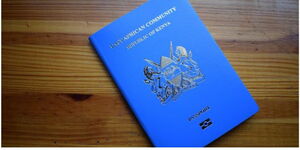A fridge is one of the most basic household items you will find in a Kenyan home. The kitchen appliance comes in different sizes and shapes and helps households preserve cooked and uncooked food and cool beverages.
However, there are challenges that come along with owning and using these electrical appliances.
Some of the common hygienic challenges experienced by people who own fridges over several years include; foul smell, food stains, and dirty fridge door rubbers.
Kenyans.co.ke looks at a few simple ways you can clean your fridge using everyday home products such as tea bags and vinegar.
Smell
Over time, fridges tend to develop a foul smell due to food spoilage, often caused by temporary power outages or existing bacteria within the fridge.
The unpleasant odour is typically noticeable the moment the fridge door is opened. To address this issue, apart from removing spoiled food items, one can effectively eliminate the smell using common cooking ingredients such as used tea bags and baking soda.
For instance, placing used tea bags in a container inside the fridge for three days can absorb the bad odour, leaving the fridge with a fresh scent.
The tea bags should be replaced every 3 days to maintain the desired effect. Similarly, baking soda can be utilised using the same method, but it needs to be replaced after 24 hours.
Alternatively, soaking a piece of dry cloth in vinegar, placing it on a dish, and keeping it inside the fridge can also help neutralise the foul smell. The cloth can be removed once the unpleasant odor dissipates.
Stains
Fridge interiors, typically white, often get stains due to food spillage, posing a challenge in terms of cleaning.
A practical solution involves using a mixture of hot water, vinegar, and dish soap.
To employ this method, combine a teaspoon of vinegar with a litre of hot water, adding a few drops of liquid soap.
Dip a dry cloth into the solution and gently rub it over the stained area.
For more stubborn stains, a toothbrush can be used to scrub the affected area before drying it thoroughly with a clean kitchen towel.
It's crucial to note that during the cleaning process, the fridge must be turned off and disconnected from the power socket to ensure safety and effectiveness.
Door Rubber Mould/ Dirt
With prolonged use, fridge door rubbers are prone to accumulating dirt and mould, potentially posing health risks.
To address this issue, dipping a piece of cloth in alcohol and using your finger to run the soaked cloth along the rubber can effectively remove the dirt and mould, ensuring a cleaner and safer fridge environment.
Loose Door Rubber
Alternatively, if the door rubber is loose, using a blow dryer can help restore its grip and prevent air from entering the fridge.
When air seeps inside due to a loose door, it creates an environment conducive to bacterial growth, leading to food spoilage.
Removing Ice
Instead of resorting to a knife to remove ice buildup in the freezer, a practical approach involves placing hot water in a sufuria and closing the freezer door for approximately 30 minutes.
This method allows the ice to melt away without risking damage to the freezer walls.
Crucially, it's essential to disconnect the fridge from power during any cleaning or maintenance activity to prevent the risk of electrocution, ensuring a safe cleaning experience.












